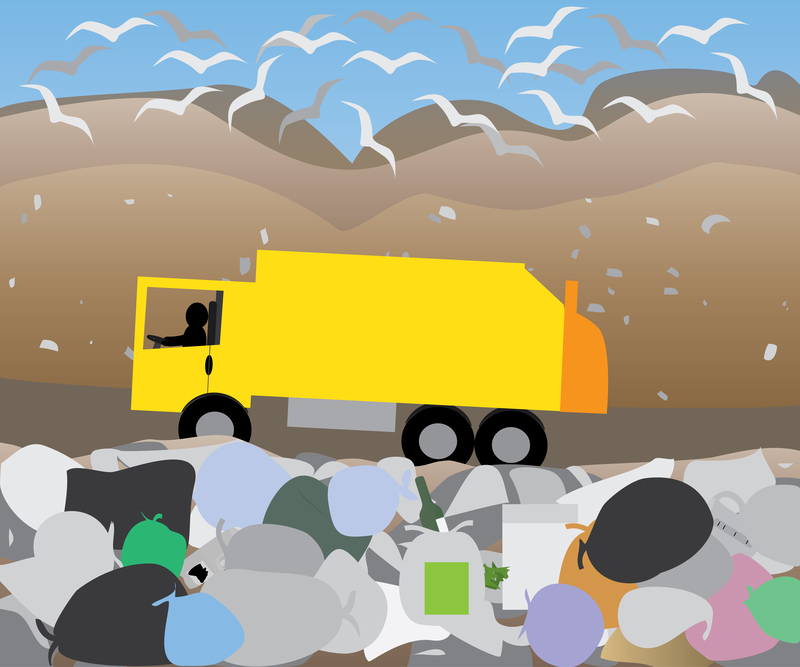Safeguarding Health and Nature with Thoughtful PPE Waste Disposal
In the wake of global pandemics and evolving health concerns, the use of personal protective equipment (PPE) has become an essential component of everyday life. Gloves, masks, gowns, and face shields protect us from harm, but their improper disposal poses significant risks to both human health and the natural environment. This comprehensive guide explores responsible PPE waste management and offers actionable insights for safeguarding our well-being and the planet.
Understanding PPE: What is Personal Protective Equipment?
Personal Protective Equipment refers to specialized gear designed to create a barrier between individuals and hazards in their environment. PPE includes items such as:
- Masks and respirators - guarding against airborne particles and pathogens
- Gloves - protecting hands from contact with infectious or harmful substances
- Face shields and goggles - shielding eyes from splashes and droplets
- Gowns and coveralls - minimizing skin exposure in clinical or high-risk settings
These items, once used, often become contaminated and are classified as biomedical or hazardous waste. The surge in PPE usage during events like COVID-19 has led to a staggering rise in medical waste worldwide, transforming PPE disposal into a critical public and environmental health issue.

The Environmental Impact of Improper PPE Waste Disposal
While PPE waste disposal is absolutely essential for infection prevention, careless handling after use can be disastrous for both humans and nature. Consider the repercussions:
- Soil and Water Pollution: PPE materials, typically made from non-biodegradable plastics like polypropylene, often end up in landfills, waterways, or the ocean. They can leach toxins and microplastics, contaminating soil and aquatic ecosystems.
- Harm to Wildlife: Animals frequently ingest or become entangled in discarded gloves and masks. This can lead to injury, suffocation, or even death for marine and terrestrial creatures.
- Public Health Risks: Used PPE may harbor pathogens, exposing waste handlers, scavengers, and the public to infection. Improperly discarded PPE can also clog sewage systems, further threatening community hygiene.
According to a study by Environmental Science & Technology, over 1.5 billion disposable face masks entered the world's oceans in 2020 alone. If left unaddressed, negligent PPE waste disposal could exacerbate the global plastic pollution problem for decades to come.
Why Thoughtful PPE Waste Disposal Matters
Thoughtful PPE waste disposal forms a vital link between personal safety and environmental stewardship. By implementing robust waste management practices, we can:
- Reduce the spread of infectious diseases in communities and healthcare settings
- Protect sanitation and waste management workers from accidental exposure
- Preserve local ecosystems and maintain biodiversity
- Minimize landfill overflow and promote circular economy solutions
Effective PPE waste management is not just an organizational responsibility--it is a moral imperative demanding individual and collective action.
Best Practices for Safe PPE Waste Disposal
Adopting a set of practical measures is essential for safe PPE waste disposal at the individual, household, and institutional levels. Here are some best practices to ensure minimal environmental and health risks:
1. Segregate Used PPE from Regular Waste
- Use designated containers: Place used masks, gloves, and other PPE in clearly labeled, leak-proof waste bins, preferably lined with double-layered bags.
- Don't mix with recyclables: PPE items are rarely recyclable through regular streams due to contamination risk. Avoid tossing used PPE with paper, plastics, or compostables.
2. Secure and Label PPE Waste
- Tie bags securely: Before disposal, make sure waste bags are tightly sealed to prevent spillage.
- Mark as "hazardous" or "infectious" waste: Clearly label PPE waste--especially if it has been in contact with confirmed infection cases--to alert waste handlers and prevent accidental exposure.
3. Follow Local Regulations and Guidelines
- Check municipal requirements: Many regions offer specific guidance for pandemic or medical waste. Always adhere to local instructions regarding PPE disposal.
- Use official drop-off points: Some areas have set up dedicated PPE bins in public spaces, clinics, or pharmacies.
4. Educate and Engage the Community
- Public awareness campaigns: Share information about the risks of improper PPE waste and the correct disposal methods via posters, social media, or local news.
- Lead by example: Encourage responsible behavior in households, workplaces, and public spaces. The collective impact can be significant when communities act together.
5. Explore Reusable and Sustainable PPE Alternatives
- Opt for washable masks and gowns: Where safe and feasible, use multi-use PPE crafted from durable materials to reduce waste volumes.
- Support eco-friendly manufacturers: Choose suppliers developing biodegradable or recyclable protective gear.
Global Strategies in PPE Waste Management
As nations face mountains of discarded gloves and masks, innovative global approaches to PPE waste management are emerging:
Healthcare Sector Solutions
- Onsite disinfection units: Hospitals increasingly install equipment such as autoclaves or incinerators to neutralize infection risks at the source.
- Training programs: Healthcare facilities often conduct regular staff training to reinforce proper, safe, and compliant disposal.
Government Policy Initiatives
- Regulatory frameworks: Many countries have updated waste legislation in response to the pandemic, mandating clear segregation, transport, and disposal requirements for PPE waste.
- Public bin installation: Cities like London and New York have installed PPE-specific containers in high-traffic areas to curb littering.
Recycling and Repurposing Innovations
- Advanced recycling facilities: Some firms are experimenting with pyrolysis and chemical recycling to convert used masks and gloves into fuel or raw materials for manufacturing.
- Upcycling projects: Creative initiatives have turned clean, single-use PPE offcuts into construction materials or park benches, diverting waste from landfills.
The Role of Individuals and Communities in PPE Waste Disposal
Everyone has a part to play in curbing PPE pollution. By making informed day-to-day choices, individuals and groups can amplify the impact of institutional waste management systems.
- Dispose responsibly: Always discard PPE according to local guidelines--never in streets, parks, or natural habitats.
- Spread awareness: Educate friends, family, and coworkers on the hazards of improper PPE disposal.
- Participate in community clean-ups: Help organize or join local initiatives to remove littered PPE from public spaces.
- Advocate for sustainable policies: Support civic leaders championing stricter PPE waste management and environmental protection measures.
Challenges and Limitations in PPE Waste Management
While thoughtful PPE waste disposal is achievable, several challenges must be addressed:
Volume and Capacity
- Surging volumes: The pandemic resulted in a ten-fold increase in medical waste across some regions, straining existing disposal infrastructure and landfills.
Lack of Awareness and Compliance
- Knowledge gaps: Despite widespread use, many people remain unaware of correct PPE waste protocols.
- Informal disposal: Inadequate disposal facilities force some users--especially in low-resource settings--to burn or simply litter used gear.
Technical and Economic Barriers
- Limited recycling infrastructure: Only a handful of nations have facilities capable of treating or recycling contaminated PPE.
- High operational costs: Safe incineration, chemical recycling, or biodegradation technologies may be expensive for underfunded municipalities.

Forging a Path to Sustainable PPE Waste Management
Moving forward, a holistic and sustainable approach is essential for safeguarding health and the environment. Here are some recommendations to improve PPE waste management worldwide:
- Invest in innovation: Research into biodegradable materials and advanced recycling techniques must be accelerated.
- Strengthen regulations: Countries need enforceable guidelines for segregation, storage, collection, and final disposal of PPE waste.
- Build capacity: Support training and infrastructure for safe PPE waste handling across all communities--urban and rural.
- Encourage public participation: Recognition of individual and community action should be woven into public health campaigns.
The vision is a world where personal safety need not compromise planetary well-being--and thoughtful PPE waste disposal is the bridge to that future.
Conclusion: Protecting People and Planet with Responsible PPE Disposal
The intersection of health protection and environmental sustainability is more important today than ever before. By adopting thoughtful PPE waste disposal practices at all levels of society, we not only minimize the risk of infection and pollution but also nurture a cleaner, healthier world for future generations.
Let us all commit--individually and collectively--to dispose of personal protective equipment responsibly, safeguarding human health and the natural world alike. Every action counts in building a safer, greener tomorrow.
